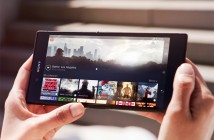
The Apple MacBook Air was one of the first truly powerful ultra slim laptops, and even though the first model was expensive, slow (because of the hard drive) and overheated often, it was pretty much a success for those who wanted an ultraportable laptop that would still be powerful enough to run most of the normal software that most people needed. The MacBook Air with a Core 2 Duo could easily run VirtualBox, Photoshop, Sound Forge and other demanding apps, making it the number one choice for traveling developers, designers and audio makers.
Obviously, the latest version of the MacBook Air has seen quite a lot of improvements and it’s now better than ever, but the laptop has now gotten some serious competition in the form of Ultrabooks, which follow the same ultraportable philosophy as the Air, but are more powerful and cost less.
One of the most attractive Ultrabooks currently on the market is the Toshiba Portege Z830 – an all metal, super slim and relatively powerful laptop that has a starting price of $899, which is the same price as the 11.6 inch MacBook Air (the Z830 has a 13.3 inch screen, of course). Can the cheap Portege compare to the 13 inch MacBook Air, though?
The MacBook Air’s unibody design is the best in class, and there’s no doubt that it’s sturdy, but Toshiba’s new sandwiched construction with a honeycomb frame on the inside makes the all metal (magnesium alloy as opposed to the Air’s aluminum) Portege Z830 very sturdy and light, as well. In fact, the MacBook Air is actually heavier at 2.96 lbs, with the Portege weighing a more comfortable 2.47 lbs, which can make quite a difference in a travel bag or on your lap. The overall size is the same, although the Air is just a tad bit thicker at 0.68 inches, with the Z830 being only 0.63 inches – and that’s counting the rubber feet – without them, the Portege makes the Air look like a fatty, as it’s just 0.33 inches thin.
The performance/price ratio is especially interesting: the MacBook air has a Core i5 1.7 GHz processor, 4 GB of DDR3 RAM and 128 GB of storage space in its basic configuration, which costs $1299. The $899 model of the Portege Z830 (aka the Z835 at Best Buy) uses a Core i3 1.4 GHz processor, 4 GB of RAM and a 128 GB SSD, but for an additional $200, you can upgrade the processor to the same Core i5 1.7 GHz that’s on the Air (so it’s $1099 for the same configuration).
At the top configuration the Air offers a Core i7 1.8 GHz, 4GB of RAM and a 256 GB SSD for a full $1599, while the Portege Z830 has the same Core i7 1.8 GHz, 6 GB of RAM (upgradeable to 10 GB if you do it yourself with an 8 GB stick – very nice) and a 256 GB mSata SSD for $1499. The difference isn’t big, but it’s there, and the cheapest Z830 model is especially interesting.
The port selection is also a bit different: the MacBook Air has 2 USB ports, 1 Thunderbolt port, an SD card slot, and one audio out/in jack, while the Portege Z830 offers the same 2 USB ports, a HDMI out port, an Ethernet jack and a VGA out port. Whichever is more useful depends on what you’re using the laptop for, but the HDMI and VGA out seem better in my opinion, since they’re compatible with more devices out there.
The one big drawback of the Portege Z830 is the display resolution –1366×768 pixels is just too small. The 1440×900 pixels on the MacBook Air are a godsend by comparison. If you want to do some more intensive work, you’ll need to adapt or just get the Air.
The Toshiba Portege Z830 is definitely a worthy competitor to the MacBook Air, and with the same specs and overall build quality, it’s cheaper, which makes it a good purchase for those on a budget. The display kind of breaks the deal, though – if they had a 1600×900 option, this Ultrabook would be perfect.



